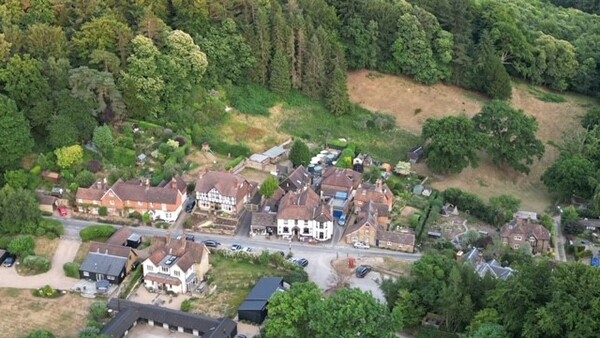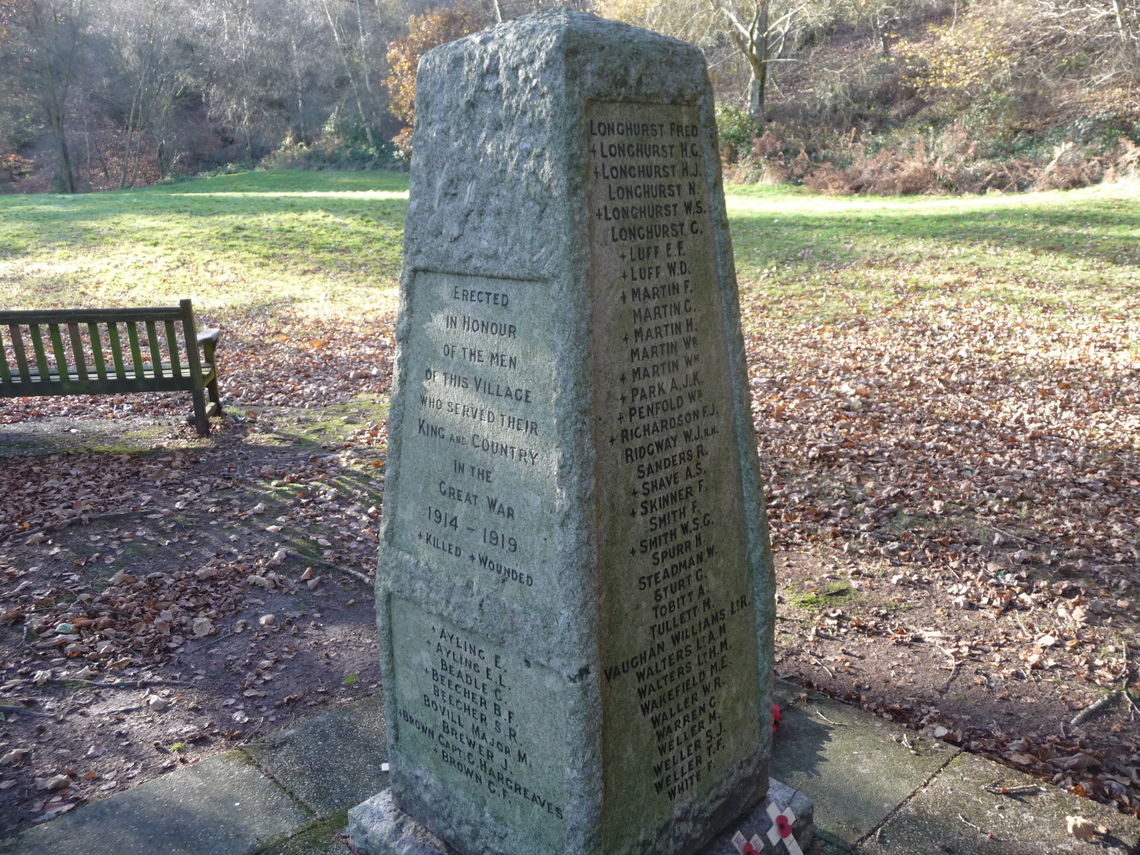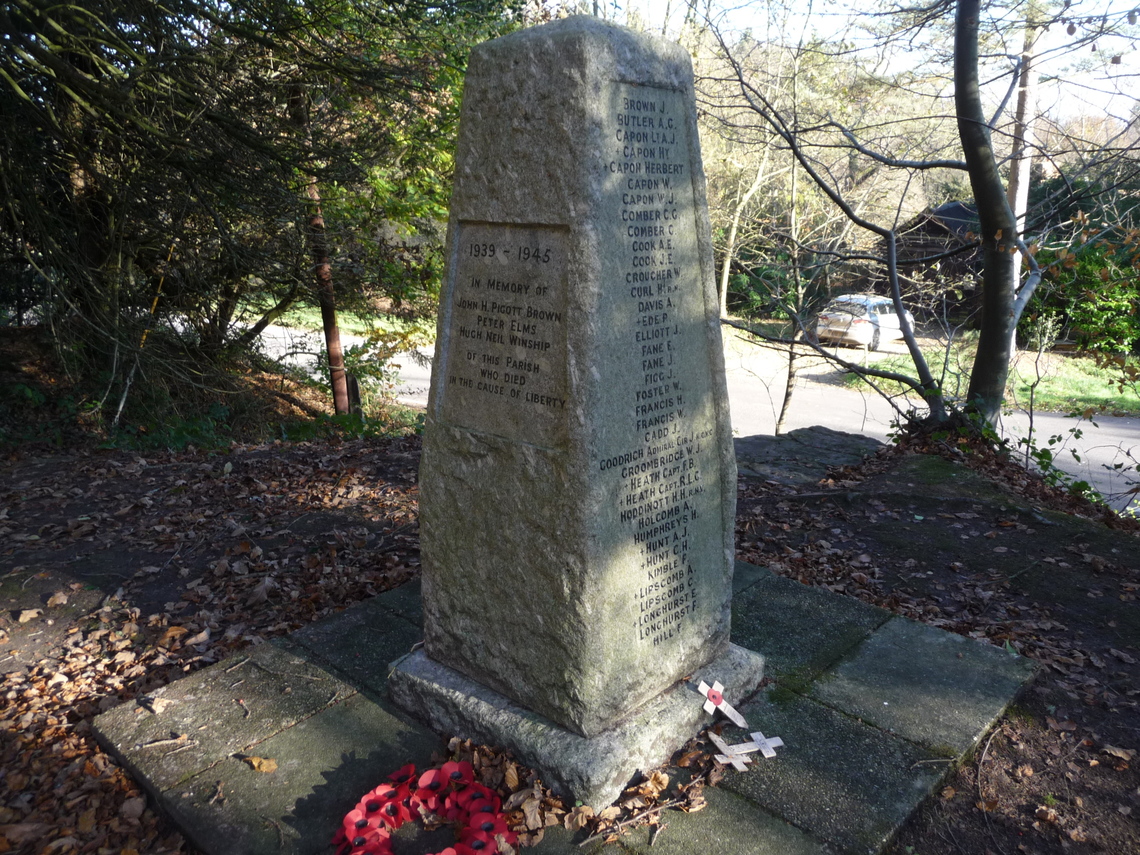At our annual Remembrance Service we remember the men from Coldharbour who gave their lives in two World Wars. Of the thirteen men on our recently refurbished Memorial who died in the Great War, five died in 1916. 100 years on, here is something of their stories.
Company Quartermaster Sergeant William Sydney Longhurst of the 1st Battalion Queen’s (Royal West Surrey Regiment) was killed by a trench mortar on 18th April 1916. He was 35.
CQMS Longhurst was born on 12th November 1880, the first of sixteen children of William and Amelia Longhurst baptised at Christ Church. The Longhursts are one of Coldharbour’s best known families, family members having lived, inter alia, at Squires Farm in Logmore Lane, Leith Hill Place, Cockshott’s Farm, Rowmount Farm, later Weald View Cottages, and Mosses Wood. William Longhurst senior was a gardener and by 1901 he was also the Parish Clerk. Five of William and Amelia’s sons served in World War 1, including Horace John Longhurst who also died in 1916.
William Sydney enlisted in the Regular Army, possibly around 1898. By 1911 he had been promoted to Lance Sergeant and was based at Warley Barracks in Essex. He arrived in France on 19th January 1915. In April 1916 the 1st Battalion Queen’s was holding the line south of La Basse Canal near the village of Quinchy. The battalion war diary notes that 18th April was wet, ‘a quiet day’ on which CQMS William Longhurst and another man were killed and two men wounded. His commanding officer wrote that CQMS Longhurst was ‘a personal friend’, ‘always cheery, courageous and painstaking no matter under what circumstances’. William Sydney Longhurst was buried in France, in the Bethune Town Cemetery.
Further family tragedy followed, when Private Horace John Longhurst was killed in action on 14th July1916. He was 29.
Pte. Longhurst was baptised at Christ Church on 26th September 1886, the fourth child of William and Amelia Longhurst. By 1901 he was working as a cow boy and at the time of the 1911 census he was a gardener, living at Anstie Grange. On 4th September 1914, he enlisted in the 9th Battalion of the Leicestershire Regiment; a service battalion raised that month and disbanded in 1917. He was killed during the Battle of the Somme. He is commemorated on the Thiepval Memorial.
Private Alfred John Hunt of the 1st Battalion Queen’s (Royal West Surrey Regiment) died of wounds received in action on 11th May 1916. He was 26. Pte. Hunt was born in Berkshire, son of Alfred and Emily Hunt who lived at Midgham near Reading. By 1911 he had moved to Surrey and was boarding at Taylors Cottage, Capel with the Voice family. Harry Voice was a farm bailiff and Alfred worked as a cowman, possibly on the Broome Hall Estate. He is commemorated in the Bethune Town Cemetery.
Private Harry Capon of the 1st Battalion Queen’s (Royal West Surrey Regiment) was killed in action on the Somme on 15th July 1916. He was 35. Pte. Capon was born on 15th November 1880, the third of four children of Benjamin and Mary Capon christened at Christ Church. The family was then living at Sheep Green. Later they lived at Rowmount Farm. Harry was one of eight children. Like the Longhursts, the Capon family also had a long association with Coldharbour and the surrounding estates. Harry’s grandfather was a gamekeeper in Wotton. Harry was a farm worker, as was his father. Harry enlisted in Guildford on the same day as Pte. Alfred Hunt. They both arrived in France on 21st April 1915. On the day he was killed, his Battalion was in action at Bazentin, attempting to capture German trenches 900 metres away. It failed to do so. After very heavy fighting all day, the order to withdraw was issued at 18.30. Thirty three men were killed, 218 wounded and 52 were reported as missing. Pte. Capon’s body was never found. He is commemorated on the Thiepval Memorial.
Harry’s brother, Private Herbert Capon, enlisted in the Royal Army Medical Corps at Cranleigh on 7th September 1915 when he was 19. Pte. Capon was discharged for reasons of ill health in July 1915 and died on 5th February 1918. He is remembered on the Christ Church Memorial and is buried in the churchyard.
Private Arthur Lipscomb of the 6th Battalion Queen’s (Royal West Surrey Regiment) died of his wounds on 12th November 1916, hit by an artillery shell when billeted behind the lines. He was 26.
Pte. Lipscomb was born on 8th July 1890, the eldest son and second child of Arthur James and Sarah Lipscomb of The Plough Inn. The Lipscomb family also have a very long association with Coldharbour and had owned/run the pub since the early 19th century. After attending Dorking High School, Arthur Lipscomb (known as ‘Arch’ to his family) joined the family business. He enlisted a fortnight after war broke out and arrived in France on 1st June 1915. In a letter home to his family dated 10th July 1916 which tells us much about the conditions in which the war was being fought, Arch wrote: ‘I cannot tell you much but will tell you all when I get home. The water and mud is terrible & we did not have a dry thread for 8 days, we have had nothing but Bully beef and biscuits for 2 weeks & jolly pleased to eat that…Remember me to all the chaps and thank George Jelly very much for the fags…’. His commanding officer wrote of him: ‘I saw a great deal of him as he was my servant from the time I joined the Battalion, and I can truly say that I knew no finer, cheerier or pluckier lad than he. He was greatly liked by all, and is much missed by everyone who knew him’. Pte. Lipscomb is buried in Avesnes-le-Comte Communal Cemetery Extension.
Many thanks go to Dorking Museum and its WW1 History Project for their help in this research. For more information go the web-sites of: Dorking Museum www.dorkingmuseum.org.uk, the Commonwealth War Graves Commission www.cwgc.org and the diaries of the Queen’s Royal West Surrey Regiment www.queensroyalsurreys.org.uk


